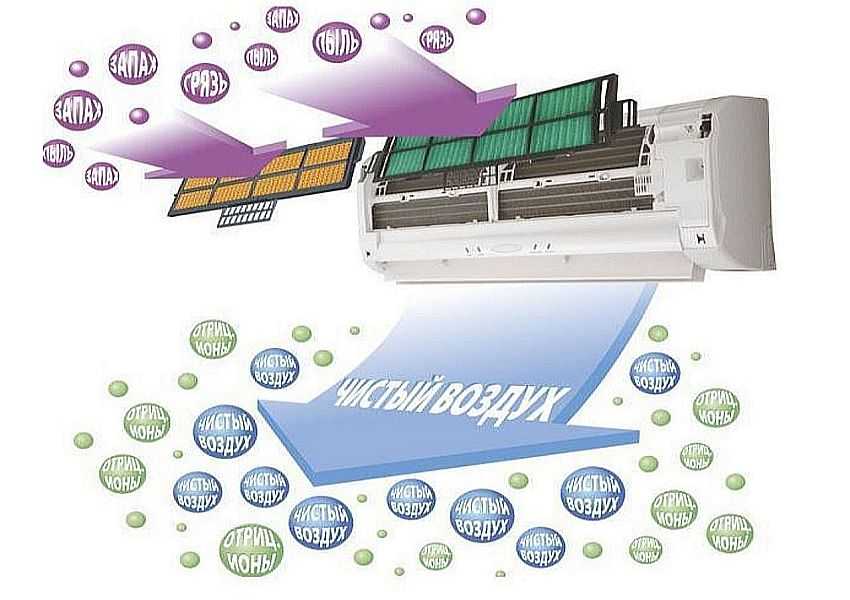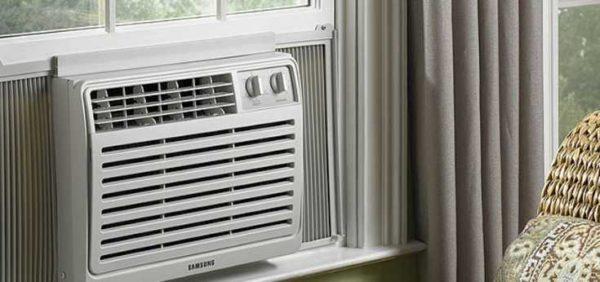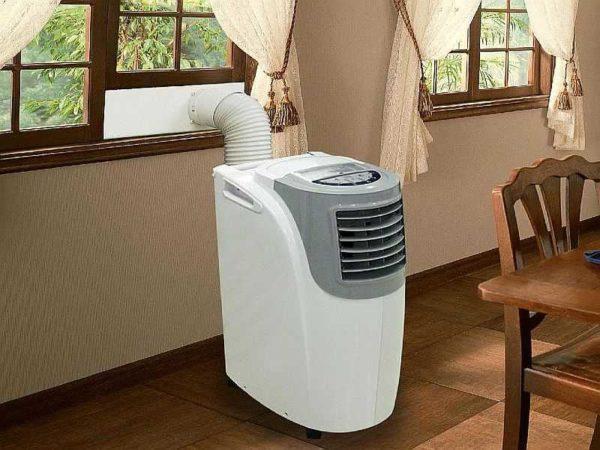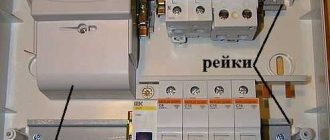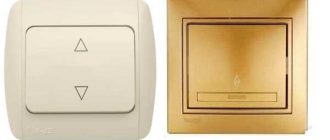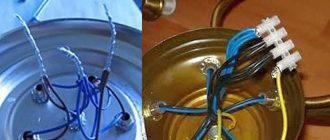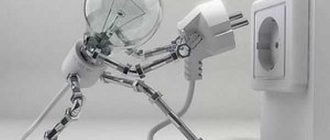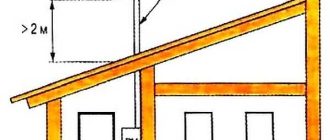Лятото е прекрасно време, но жегата не винаги е приятна. Климатичното инженерство позволява да се повиши комфортът на живот - то ще поддържа температурата в нормални граници и може да регулира влажността. Но не е толкова лесно да се избере климатик: на пазара има твърде много предложения. Как да не сбъркате при избора, но и да не надплатите?
Когато става въпрос за охлаждане на въздуха в помещението, се използват два термина - климатици и сплит-системи. Каква е разликата? Климатиците са общоприето наименование на системите за охлаждане и вентилация. Включително т.нар. и моноблок (от един блок) - прозоречни и мобилни (подвижни) устройства. Сплит-системата е специфичен вид оборудване, състоящо се от две или повече устройства - външно и вътрешно (няколко вътрешни устройства).
Съдържание на статията
Видове климатици
Малко повече за това какво представляват климатиците за къща или апартамент. Съществува класификация според броя на блоковете. Тя може да се счита за основна.
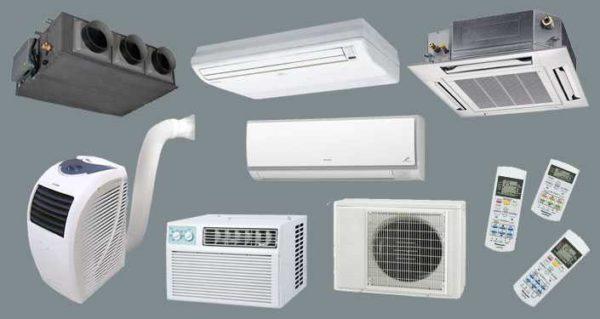
Моноблок
При моноблоковите климатици всички части и устройства са опаковани в една кутия. Този тип климатична техника се появява първа и някога е била широко разпространена, но днес няма толкова много от тях - те са твърде шумни.
Според начина на монтаж климатиците моноблок биват:
- Прозорец - монтиран вместо част от рамката. През последните години тези устройства загубиха предишната си популярност - те са много шумни, покриват част от прозореца, а външният им вид не е от най-привлекателните. Предимства: това е най-бюджетният вариант, който има продуктивно охлаждане. Не е лош икономичен вариант за вила, офис или малки промишлени помещения.
- Мобилни подови климатици. Това е доста масивен куфар на четири колела. Въпреки че тези модели са мобилни, те също така са свързани с прозорец или вентилационна система: отработеният горещ въздух се изхвърля там с помощта на гофриран маркуч. Това означава, че ще бъде необходимо да се осигури в прозореца някаква вложка с отвор с подходящ размер - за да може да се изведе гофрираният маркуч навън. Предимство - сравнително ниска цена и лесен монтаж. Организиране на изхода за отработения въздух - това е цялата инсталация. След това го включвате и той работи. Ако желаете, можете да го изнесете в друго помещение (ако има място за свързване на маркуча).
Охлаждащи системи от няколко блока
Тези климатични системи са по-модерни, имат по-широка функционалност, работят по-тихо (поради факта, че най-шумните устройства са изнесени навън - извън помещението). Съществуват няколко вида такова оборудване:
При домашните сплит системи (и "мулти") вътрешните тела могат да бъдат три вида: монтирани на стената, на тавана и на пода. И от трите варианта най-популярен е стенният, въпреки че таванният е по-ефективен, тъй като разпределя по-равномерно потоците в цялото помещение, без да създава рязко контрастиращи зони в температурата.
Съществуват и сплит системи канал, касета, под- таван, колона. Но всички те се характеризират с висока производителност и сложност и се използват в предприятия и големи офиси. В къщи и апартаменти те се инсталират много рядко.
Ако трябва да изберете климатик за къща или апартамент, ще трябва да се ограничите до четири варианта - прозорец, подвижен под или сплит-системи от два типа - с един или няколко вътрешни блока. Въпреки че напоследък преобладаващата част от хората избират сплит-системите, тъй като те могат да осигурят по-високо ниво на комфорт.
Вземане на решение за капацитета
Решението за вида на оборудването не е всичко. По-нататък е необходимо да се разберат техническите характеристики, да се изберат необходимите опции и едва след това да се пристъпи към избор на конкретен модел.

Нека разберем какъв капацитет на охладителната система ви е необходим. Има два начина да разберете необходимия капацитет на климатика: да се обадите на представител на фирмата, която продава климатици, или да го изчислите сами. Самото изчисление е елементарно, но ще трябва да вземете предвид особеностите на вашата къща или апартамент.
Изчисляване по квадратни метри
Така че, когато се определя мощността на климатика, се счита, че за 10 квадратни метра площ е необходима 1 kW охладителна мощност. Това означава, че ако планирате да инсталирате сплит система само за охлаждане на стая, намерете нейната площ, разделете я на 10 и ще получите желаната мощност.
Но понякога си струва намерената цифра да се увеличи: ако къщата, в която живеете панел или тухла, без допълнителна изолация, стените му през лятото ще бъдат забележимо затоплени. За да може оборудването да се справи безпроблемно с такова натоварване, си струва да добавите 20-25% от намерената мощност. Тогава няма да има проблеми с температурата дори в най-горещите дни.
Например стая от 22 квадратни метра. Разделено на 10, получаваме 2,2 kW. Това е мощността или малко повече, която търсим при избора на модел.
Същите принципи важат и за изчисляване на мощността на оборудването за целия апартамент или къща. Обобщава се само площта на всички помещения, в които планирате да поддържате необходимия микроклимат с помощта на този климатик. И след това всичко е същото: разделете на 10, добавете резерв, ако е необходимо.
Изчисляване по обем
Този метод е по-точен, тъй като отчита височината на таваните, както и особеностите на разположението на помещенията. Изчислява се в този случай по следния начин: обемът на помещението се умножава по нормата, а след това се прави корекция за други източници на топлина. Нормата е следната:
- за стаи със северно изложение - 30 W/m3;
- ако стените са обърнати на запад/изток - 35 W/m3;
- ако стената е обърната на юг - 40 W/m3.
В ъглова стая се избира по-висок стандарт. Също така е необходима по-висока мощност, ако площта на прозореца е голяма или ако има стари дървени рамки, които не осигуряват въздухонепроницаемост.
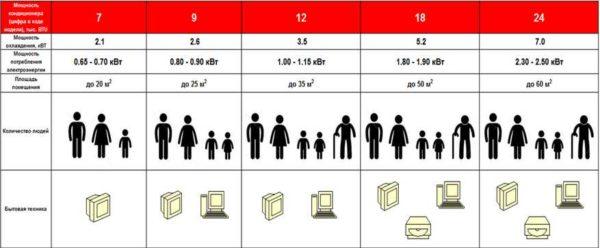
Разглеждат се допълнителни източници на топлина за климатизация:
- Компютър. Ако той е инсталиран в стаята, добавете 300-400 W към установената стойност.
- Лице. По принцип тази позиция се използва по-често при изчисляване на параметрите на климатизацията в офиси и промишлени помещения, но в "гъсто населен" апартамент също може да е важна. За всеки човек в стаята добавете 100-150 W мощност на климатика.
Ето един пример за изчисление. Необходимо е да се избере климатик за стая с южно изложение, в която е инсталиран компютър и постоянно живее един човек. Размерите на помещението са 4*3,5*2,7 метра. Намираме обема, умножаваме всички параметри на помещението и получаваме 37,8 m3. Намерената цифра се умножава по нормата: 37,8 m3 * 40 W/m3 = 1512 W. След това нека добавим резерв за външни източници на топлина: 1512 W + 400 W + 150 W = 2032 W. Закръгляйки, получаваме 2000 W или 2 kW.
Основни технически характеристики
За да изберете правилно климатик, е необходимо да познавате основните характеристики, показващи неговата ефективност и икономичност. Можете да се справите и без тези технически тънкости, но ще трябва да разчитате на съветите на продавач-консултанта, а те не винаги са обективни. Затова е по-добре да се ориентирате сами, още повече че това не е много трудно.
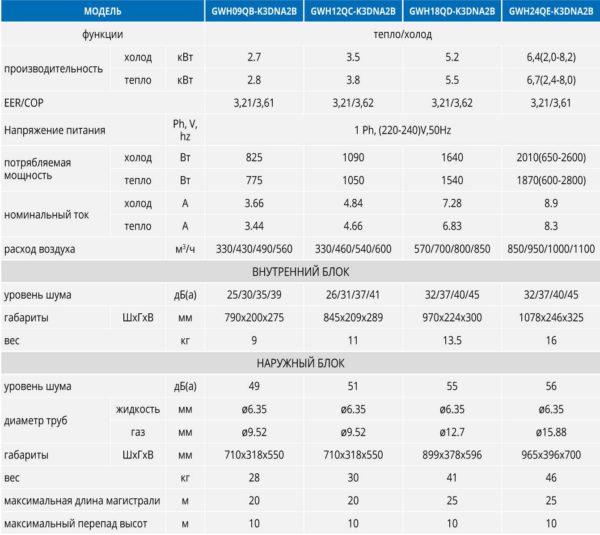
Клас на охлаждане или капацитет на охлаждане
В техническите спецификации на климатиците и сплит системите можете да видите ред, в който е написано "капацитет на охлаждане", а след това има цифри от 5200 BTU/час до 42700 BTU/час. Нека ги разбием. BTU/час е британска термична единица и показва количеството енергия, което устройството ще използва, за да повиши температурата на 1 килограм вода с 1 градус по Фаренхайт.
По отношение на климатиците този параметър отразява ефективността на охлаждане. Колкото по-голям е капацитетът на охлаждане (повече цифри), толкова по-икономична ще бъде сплит системата (ще се правят по-малко разходи за електроенергия).
Понякога вместо капацитет на охлаждане се посочва класът на охлаждане и тогава има латински букви A, B, C, D, E, F, G. Този параметър също отразява ефективността на работа, но се разглежда като съотношение на отоплителната мощност към консумираната мощност. Той се обозначава също като ERR или SERR.
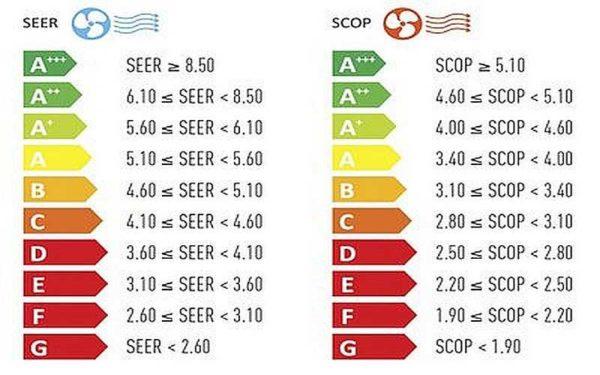
Ако говорим за буквеното обозначение, клас А е най-икономичният, а клас G - харчи най-много електроенергия. Като правило, при равни други характеристики, домакинските уреди от клас А и по-висок (има и А+, А++, А+++) са по-скъпи. Разликата е стотици долари. По-рано, когато електроенергията не беше толкова скъпа, малко хора обръщаха внимание на този показател - разликата, изразена в рубли, не беше толкова голяма. Сега, когато цената на електроенергията непрекъснато расте, вероятно си струва да се купи по-икономичен климатик - в определени интервали от време той може да работи в продължение на двадесет и четири часа, така че този параметър сега е доста важен.

Съществува и втори коефициент - COP или SCOP. Той отразява ефективността на отоплението, определена като съотношение между количеството отделена топлина и количеството изразходвана енергия. Естествено, същото правило важи и в този случай: колкото по-висок е коефициентът, толкова по-икономичен ще бъде климатикът по време на работа с отопление (ако има такава функция).
Ниво на шума
В характеристиките обикновено се посочват две стойности - максимално и минимално ниво на шума. То се измерва при работа с минимална и максимална мощност.
Важна характеристика, особено ако сплит системата ще бъде инсталирана в спалнята. В този случай търсете много тих климатик. За спалнята е приемливо ниво на шума от 19-24 dB. Максимално допустимото ниво в жилищни помещения според SNiP е 34 dB, така че тези, които не отговарят на този критерий, е по-добре да не се разглеждат.
Максимална дължина на комуникациите
Сплит системите се състоят от две или повече устройства, които са свързани помежду си с помощта на канали и кабелни снопове, чрез които се предават сигнали за управление.
В стандартния вариант дължината на канала е 5 метра, което обикновено е достатъчно. Но когато се инсталира в големи частни къщи или вили, може да са необходими по-големи разстояния. Максималната дължина на комуникацията е 42 метра. Такива модели струват много по-скъпо, както и плащането за техния монтаж. За да изберете климатик на този принцип, ще трябва първо поне приблизително да определите местоположението му (вътрешни и външни тела), да измерите очакваното разстояние (вземете предвид, че трасето минава покрай стените) и едва след това да изберете модел.
Допълнителни функции
Невъзможно е да изберете балсам и да не помислите за допълнителни функции. Те позволяват да се повиши нивото на комфорт, но наличието на всяка функция увеличава крайната цена на оборудването. Ето защо е необходимо да се подходи балансирано към избора.
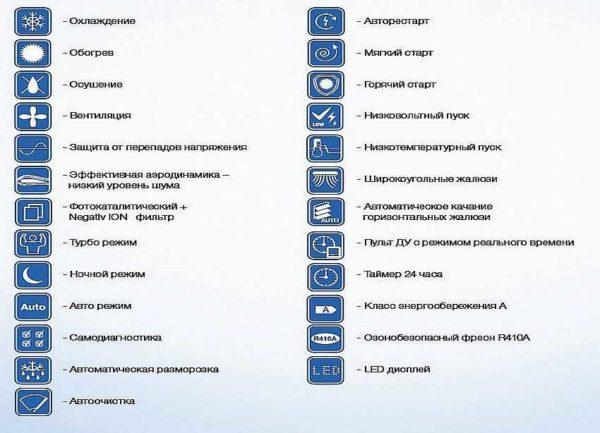
Наличие на дистанционно управление
Днес вероятно всички модели сплит системи се предлагат с дистанционно управление. Това е разбираемо - блоковете обикновено висят под тавана и да се качват там всеки път, когато е необходимо да се смени режимът на работа, едва ли ще се хареса на някого. Така че е трудно да го наречем допълнителна функция, но има и модели без дистанционно управление, така че бъдете внимателни. Да си изберете климатик и след това да разберете, че няма дистанционно управление, не е добро откритие.
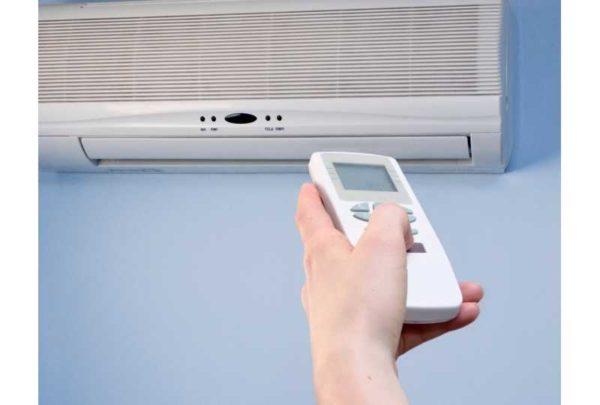
Дистанционното управление позволява да се променят всички параметри на работа на климатика и сплит системата:
- температура;
- скорост на въртене на вентилатора;
- посока на въздушния поток (променя се вертикалното и хоризонталното положение на завесите).
Това е минималният набор, може да има цяла гама от функции, но в случай че моделът ги поддържа.
Автоматичен режим
Полезна опция. Позволява ви да зададете желаната температура, а при някои модели и влажност, и да забравите. Тогава сплит системата сама ще се включва и изключва, когато параметрите се отклоняват от зададените.
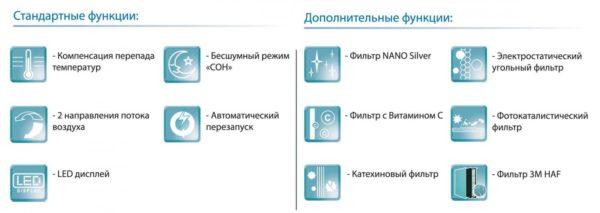
Такова оборудване е много по-удобно и икономично от това, което трябва да се включва и изключва принудително от дистанционното управление.
Каква е разликата между инверторен климатик
Инверторните климатици са климатици, които могат да променят плавно параметрите на работа: мощността на охлаждане и скоростта на вентилаторите. За разлика от конвенционалната технология, когато оборудването има два режима на работа: или работи с мощност 100%, или е изключено. Това дава три неоспорими предимства:
Ако трябва да изберете икономичен климатик за апартамент или къща, трябва да разгледате инверторни модели. Въпреки че са по-скъпи от обикновените, те "перат" по-малко електроенергия (икономията може да достигне около 30%).
Друго предимство на инверторните климатици е по-широкият диапазон от работни температури. Някои модели могат да работят при -35°C, а горната граница също е по-висока - до +45°C. Това може да е важно в някои региони.
Режим на отопление
Съществуват климатици, които могат да работят не само за охлаждане, но и за отопление. Тази функция е полезна в апартаменти, свързани с централно отопление. Ако е необходимо, е възможно да се отоплява извън сезона, когато навън вече е хладно, но отоплението все още не е включено. В този случай климатикът с отопление е много необходимо нещо. Такъв режим понякога се нарича "зима/лято".
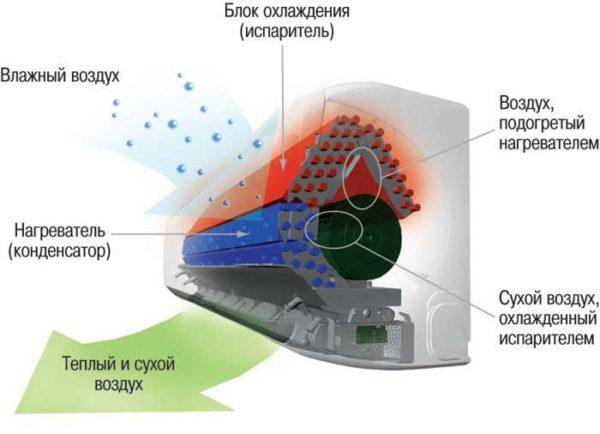
Ако изборът ви е паднал върху модел с възможност за работа с въздушно отопление, обърнете внимание на два параметъра в техническите характеристики: капацитет в режим на охлаждане и капацитет в режим на отопление. При евтините модели те са неравностойни и могат да показват от 20% до 60% на охлаждане. Това означава, че такива модели няма да ви осигурят пълноценно отопление. При по-скъпите модели процентното съотношение изглежда по-добре, като при някои дори достига 100%. Но те принадлежат към премиум класа, което се отразява на цената - те са по-скъпи с 100-200$.
Има един момент: сплит системите не могат да работят при ниски температури. Най-често работният им диапазон е до -5°C. Така че това наистина е вариант за извън сезона. През зимата тя просто няма да работи.
Таймер
Полезна функция, особено ако не сте вкъщи през целия ден. Тя ви позволява да включите или изключите климатика в определено време. Можете да зададете времето на включване половин час преди пристигането си и ще влезете в апартамента или къщата с нормална температура.
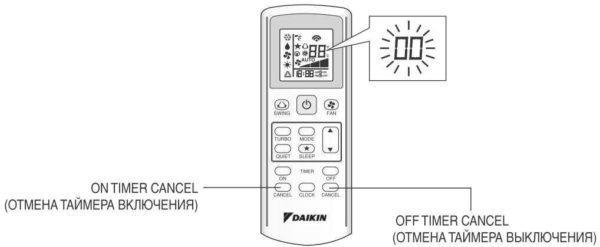
Има и възможност за изключване на климатика чрез таймер. Това може да се наложи вечер. Автоматиката ще изключи устройството в определеното време и няма да се налага да ставате, прекъсвайки съня си. Като цяло, ако цените собствения си комфорт, си струва да изберете климатик с тази функция.
Режим на заспиване
Ако нощите в региона са толкова горещи, че не можете да изключите климатика през нощта, режимът "сън" ще ви бъде полезен. Той превключва оборудването на намалена мощност, вентилаторите се въртят по-бавно, съответно нивото на шума намалява.
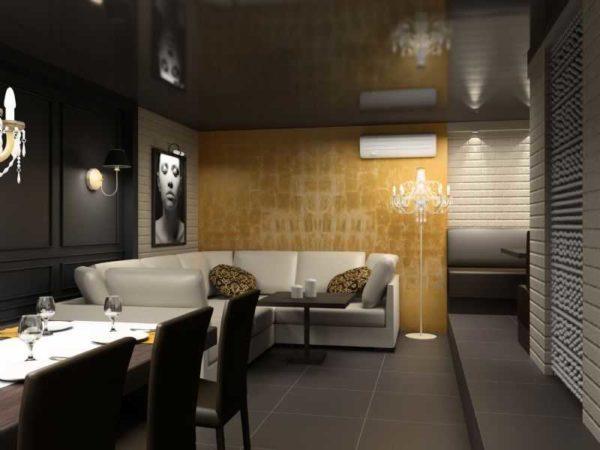
Този режим може да бъде полезен, ако климатикът не е инверторен. Като цяло не е лоша функция, но само за тези климатици, които планирате да инсталирате в спалнята.
Режими на озониране и йонизация
Озонирането и йонизацията са предназначени да направят въздуха в помещенията по-чист, без бактерии и по-здравословен. Самата идея е добра, но за тези операции има отделни устройства. Както обикновено, специалните устройства работят по-ефективно и рядко се използват вградени в климатика, но те повишават значително цената.
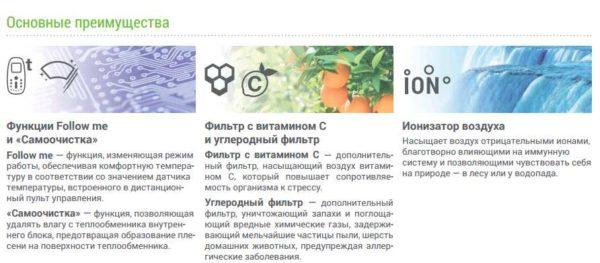
Изсушаване на въздуха
Режимът на изсушаване позволява да се отстрани излишната влага от въздуха, тъй като при висока влажност топлината се понася по-зле. Функцията може да бъде полезна, ако избирате климатик за малък апартамент. В този случай кухнята не е далеч от дневните и готвенето или дори чаят могат значително да повишат влажността в стаите.
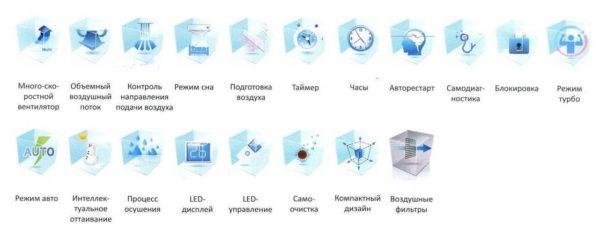
Също така този режим е полезен в региони, които се характеризират с висока влажност през лятото. Той ви позволява да съществувате в по-комфортни условия.
Вентилация и пречистване
Режимът на вентилация (вентилатор на английски език) се предлага при много модели сплит системи. Той ви позволява да "изпомпвате" свеж въздух от улицата, но без охлаждане. Вентилацията може да се осъществява с различна интензивност - може да има от 2 до 8 скорости на вентилатора. По принцип можете да се справите и без този режим, ако разполагате с вентилатор, отдушник или възможност за отваряне на прозорец.
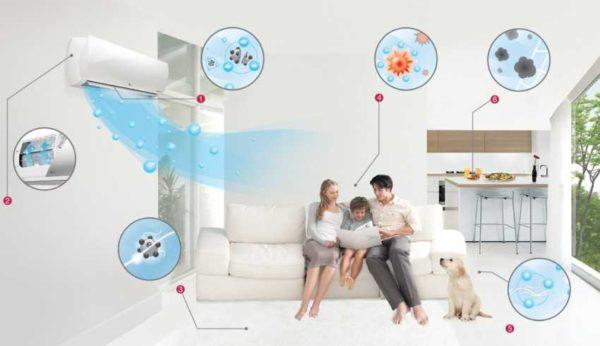
В някои модели, съчетани с режима на вентилация, има пречистване. Въздухът, идващ от улицата, преминава през система от филтри, които го пречистват от алергени и прахови частици. Този режим е необходим за страдащите от алергии, той им позволява да преживеят най-лошото време с минимален дискомфорт. Така че, ако някой в семейството страда от алергии, е желателно да изберете климатик с вентилация и пречистване.
Автоматично рестартиране
Наличието на тази функция позволява да се възстановят настройките, които са били преди прекъсването на захранването. Оборудването се включва самостоятелно при включване на захранването. Тази опция може да бъде полезна, ако в региона има чести прекъсвания на електрозахранването.

